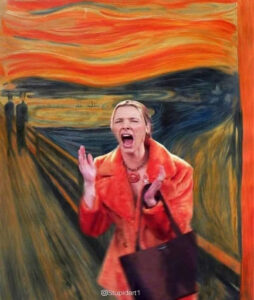1. What is Krukowski’s main point about how we experience time in the “real” world versus are experiences with “digital” time? Why are these differences significant?
Krukowski’s main point about how we experience time in the “real” world versus our experiences with “digital” time is that digital time is fabricated by humans and controlled. Digital time is nothing more than an agreed-upon time in which every person follows. “Real” time, however, is relative to every person based on the moment they are in, and how fast time is for them.
2. What does Krukowski mean when he says that listening has a lot to do with how we navigate space?
When Krukowski says that listening has a lot to do with how we navigate space, he refers to our sense of sound as a way of discovering our location. Like bats. we could use sound to track our movement, and how far we are from a certain sound, and which direction it is heading in.
EPISODE: 2
3. In the interview at the beginning of the episode, Jeremiah Moss argues that developers in Astor Place are “privatizing public space in a very stealth way.” What does he mean by this? What does Moss say about the distinction between public and private space, and why is it important?
In the interview at the beginning of the episode, Jeremiah Moss argues that developers in Astor Place are “privatizing public space in a very stealth way.” He refers to the safe spaces people have created themselves by using their phones and listening to music as they’re walking through public space. However, this has transformed these places from the public to private, with rules set by private companies.
4. What is the significance of Emily Thompson’s idea that the development of concert halls arose from desires to “control interior spaces”? How is this desire, according to Krukowski, related to earbuds and headphones?
The significance of Emily Thompson’s idea that the development of concert halls arose from desires to “control interior spaces” refers to the plethora of noise pollution outside, from car engines, trains, construction, etc. This has led to the likability of earbuds and headphones, which create private spaces for people inside their heads.
5. In your own opinion, what are the key ideas from this episode about the relationship between sound and space? What strikes you as interesting about the ways that sound influences our experience of space.
To me, this was very interesting, because for so long I have taken these two senses for granted when in reality, they are a very important factor in how I navigate around this world. The next time I’m outside, ill be sure to leave the headphones at home.




